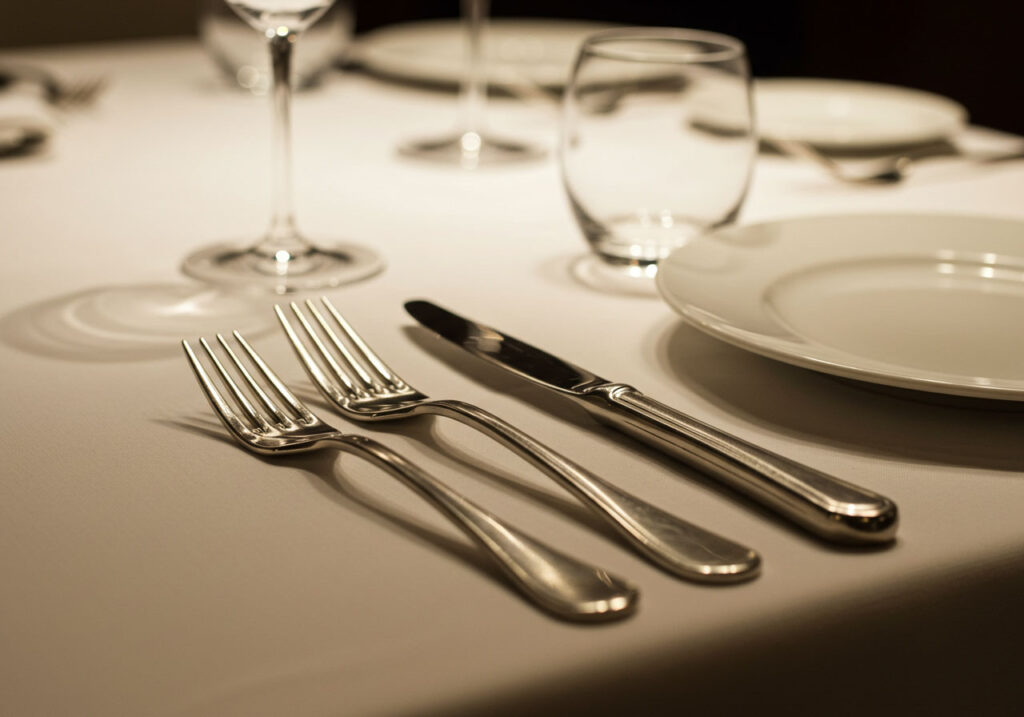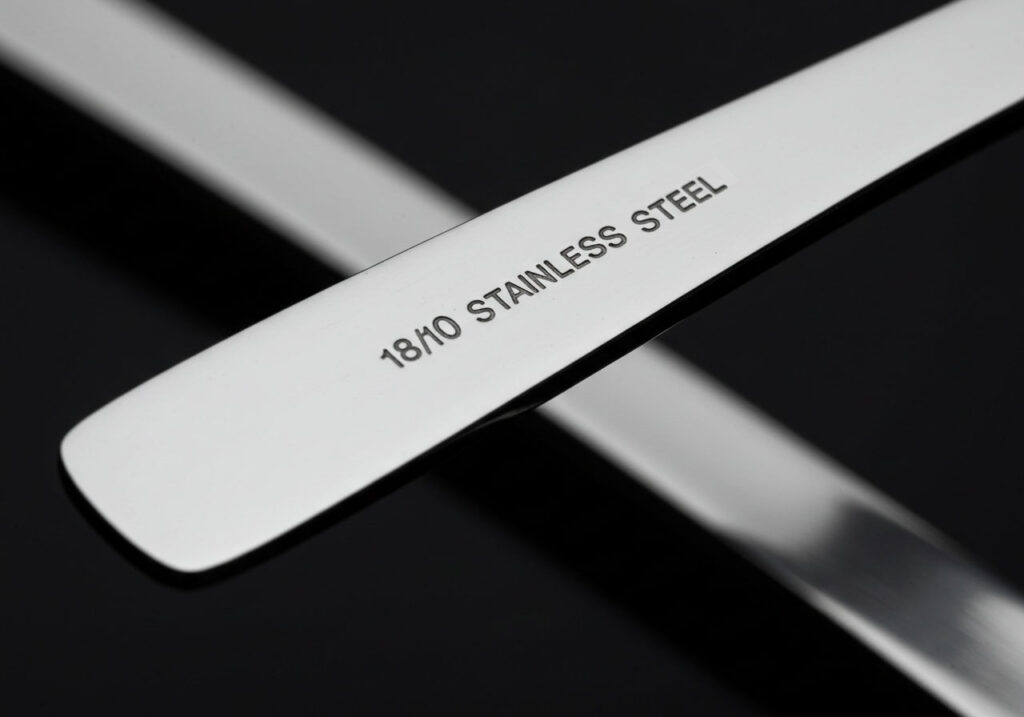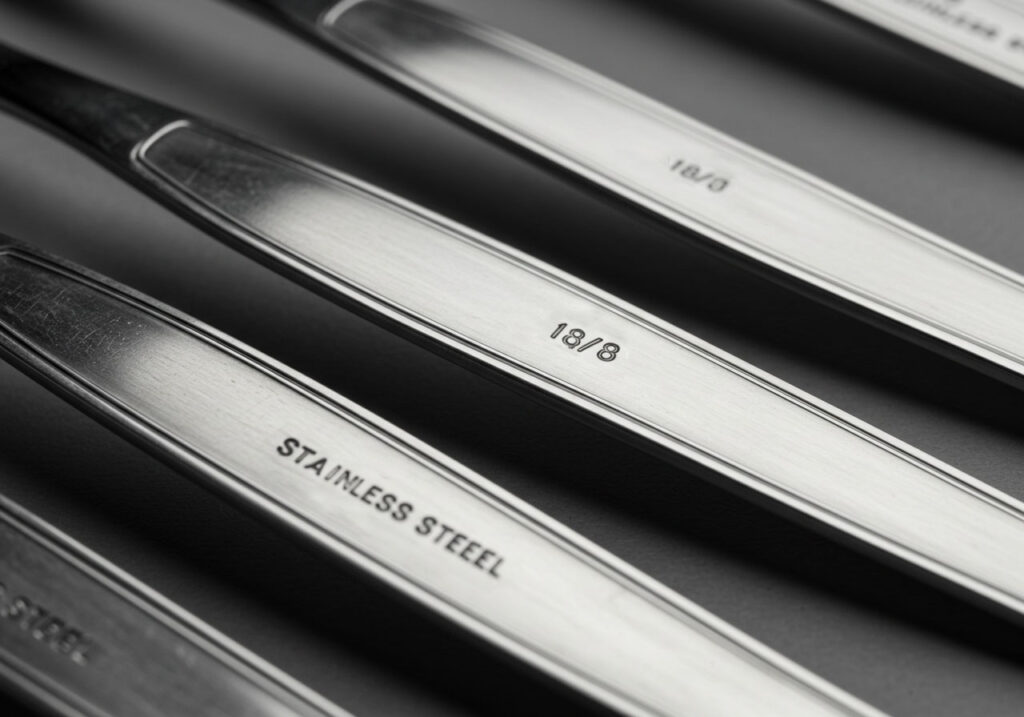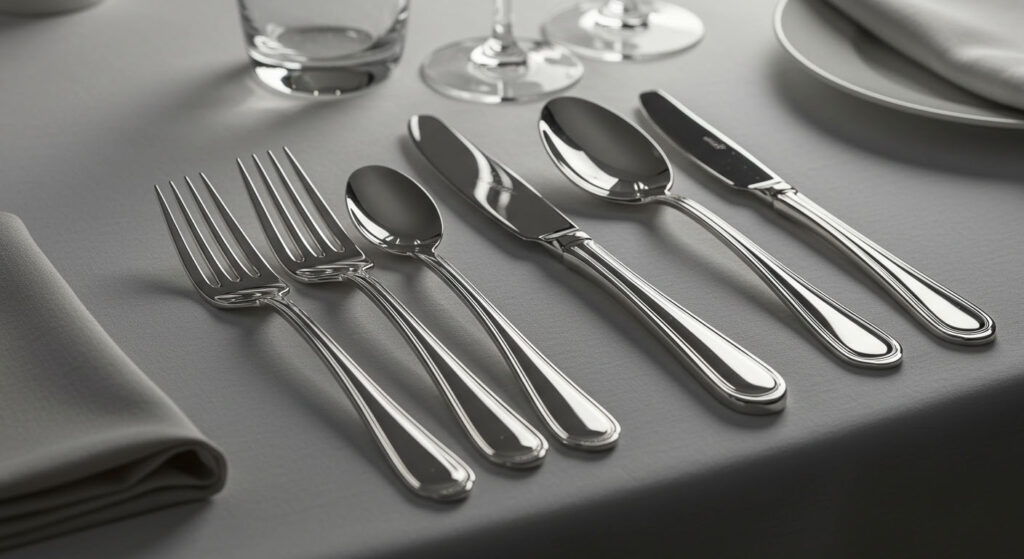What is the best quality stainless steel for flatware?
Choosing the right stainless steel is confusing and risky. A bad choice means rust, customer complaints, and a tarnished brand reputation. Let's find the best material for lasting quality.
The best quality stainless steel for most flatware is 18/10. As a high-nickel version of Grade 304, it offers an excellent balance of superior corrosion resistance, durability, and a brilliant luster, making it the industry standard for premium, long-lasting utensils.

You now know that 18/10 is the top choice for most applications. But the story doesn't end there. As a factory owner, I've seen how much confusion exists around these numbers. I often work with experienced procurement managers, like my client Jacky from a major US brand. He needs absolute clarity to protect his brand's reputation. To really understand what you're buying, we need to look closer at what these grades mean and how they compare. Let's break it down so you can make confident decisions for your brand. This will help you avoid common and costly mistakes.
What is the highest quality of stainless steel flatware?
Are you looking for the absolute peak of flatware quality? Settling for second-best can harm your brand's premium image. Let's define what makes the highest-quality stainless steel.
The highest quality stainless steel is Grade 316. It contains molybdenum, an element that gives it unmatched resistance to corrosion from salts and acids. This makes it exceptionally durable and ideal for luxury, marine, or medical-grade applications.

While 316 stainless steel stands at the very top, it is important to understand the context. I often discuss this with experienced buyers like Jacky. For most home and restaurant applications, 18/10 steel is the practical "best" choice. The highest quality isn't just about technical specs; it's about the right material for the job.
Why is 316 Superior?
The key difference in 316 is the addition of molybdenum. This element dramatically increases its resistance to corrosion, especially from chlorides found in salt and harsh detergents. It's often called "marine grade1" for this reason. For flatware, this means it has the absolute best protection against pitting and rust in any condition. In terms of pure performance rankings, it stands at the top for both hardness and corrosion resistance2.
Practical Choices for Your Brand
While 316 is the best on paper, 18/10 (a high-quality 304 grade) is what most premium brands use for forks and spoons. It offers fantastic performance at a more accessible cost. Knives are a different story; they are usually made from Grade 420 steel, which is harder and can hold a sharp edge.
| Performance Metric | Grade Ranking (Highest to Lowest) |
|---|---|
| Corrosion Resistance | 316 > 304 (18/10) > 420 > 430 |
| Hardness | 316 > 304 (18/10) > 420 > 430 |
I advise my clients to choose 316 only when ultimate corrosion resistance is a must, like for use on yachts. For all other high-end purposes, 18/10 is the perfect premium choice.
What are the levels of stainless steel flatware?
Seeing numbers like 18/10, 18/8, and 18/0 is confusing. Mistaking them can lead to buying poor-quality items or overpaying. Let's break down these levels for total clarity.
Stainless steel flatware is graded by its chromium and nickel content. The main levels are 18/10 (premium), 18/0 (mid-range), and 13/0 (for knives). These numbers represent the percentage of chromium and nickel, which determine the flatware's rust resistance, shine, and quality.

The numbers on flatware are not random; they are a code for quality. I've spent years explaining this to partners to ensure they get what they pay for. The system is simple once you understand the two key ingredients: chromium and nickel. The formula is "Chromium% / Nickel%". Chromium provides hardness. Nickel provides rust resistance and shine.
Levels Explained
- 18/10 and 18/8 Stainless Steel (Grade 304): This is the top tier. It contains 18% chromium and 8% to 10% nickel. The high nickel content makes it very resistant to corrosion, gives it a substantial weight, and a beautiful luster. This is the standard for fine dining and premium brands. My factory produces a huge volume of this for clients like Jacky.
- 18/0 Stainless Steel (Grade 430): This has 18% chromium but almost no nickel. It's still a durable steel but is more likely to stain or rust than 18/10. It is magnetic and is a common choice for mid-range or budget-friendly flatware.
- 13/0 Stainless Steel (Grade 410/420): This contains 13% chromium and no nickel. You will almost always find this material in dinner knives. Less chromium makes it less rust-resistant, but its structure allows it to be heat-treated for superior hardness. This is critical for a blade that needs to hold a sharp edge.
How to tell if stainless steel is good quality?
You're looking at samples, and they all appear shiny. How do you spot true quality? Relying on looks alone is a risky strategy. Here are the simple checks I use every day.
Check the back for a grade stamp (e.g., "18/10"). Good quality flatware feels weighty and balanced in your hand. The finish must be smooth with no pits or rough edges. High-quality forks and spoons (18/10 or 18/8) are also non-magnetic.

When I inspect a new production run, I don't just trust the spec sheets. I use my own hands and eyes. Quality has a distinct feel to it. You can learn to spot it, too. A buyer I work with, Jacky, has developed a keen sense for these details over his 15 years in procurement. Here is a simple process to assess the quality of any stainless steel flatware sample:
1. Look for the Stamp
Turn the piece over. Reputable manufacturers will stamp the grade on the handle, such as "18/10" or "18/8". If there is no stamp, it's often a red flag for a lower-quality material like Grade 201 steel, which has poor corrosion resistance and is not something I'd recommend.
2. Feel the Weight, Balance, and Finish
- Weight: High-quality 18/10 steel has a noticeable heft. It should not feel flimsy.
- Balance: It should feel balanced in your hand, not too heavy in the handle or the head.
- Edges: Run your finger along the fork tines and the bowl of the spoon. They must be perfectly smooth. Any roughness indicates a poor polishing process.
3. Use the Magnet Test
This is a quick and effective trick.
- 18/10 or 18/8 (Forks/Spoons): Non-magnetic. A magnet will not stick.
- 18/0 (Forks/Spoons): Magnetic. A magnet will stick firmly.
- 13/0 (Knives): Magnetic.
This test instantly reveals if a spoon or fork contains nickel, the key element for superior rust protection and luster.
Is 18/10 stainless steel equivalent to 316?
There is a common, costly misconception in our industry. Thinking 18/10 is the same as 316 can lead to wrong specifications and product failures. Let's clear this up for good.
No, 18/10 stainless steel is not equivalent to Grade 316. 18/10 is a high-nickel version of Grade 304 steel. Grade 316 is a chemically different steel that contains molybdenum, giving it significantly superior corrosion resistance.

This is one of the most important technical details I clarify for my clients. The confusion is understandable because both are premium, non-magnetic stainless steels. However, their ingredients and performance are very different. Believing they are the same is a major sourcing error.
The Key Chemical Difference: Molybdenum
The entire difference comes down to one element: molybdenum.
- 18/10 Stainless Steel: This name describes the composition: 18% chromium and 10% nickel. It is a variant of Grade 304. It does not contain molybdenum.
- 316 Stainless Steel: This is a specific grade number. It contains 16-18% chromium, 10-14% nickel, and 2-3% molybdenum.
The molybdenum is the hero ingredient that makes 316 steel exceptionally resistant to corrosion from chlorides, like salt.
Performance and Application
This chemical difference leads to very different uses.
| Feature | 18/10 (Grade 304 type) | Grade 316 |
|---|---|---|
| Key Element | High Nickel (~10%) | Molybdenum (~2-3%) |
| Resistance | Excellent for daily use | Superior against salt & acids |
| Ideal Use | Premium flatware, cookware | Medical devices, marine hardware |
The bottom line is simple: 18/10 is a name based on composition (Cr/Ni), while 316 is a specific grade number with molybdenum. They are not interchangeable. For superb flatware, 18/10 is the goal. For a surgical tool, 316 is the requirement.
Conclusion
In summary, 18/10 steel, a type of Grade 304, offers the best balance of quality, durability, and value, making it the ideal choice for most premium flatware needs.
